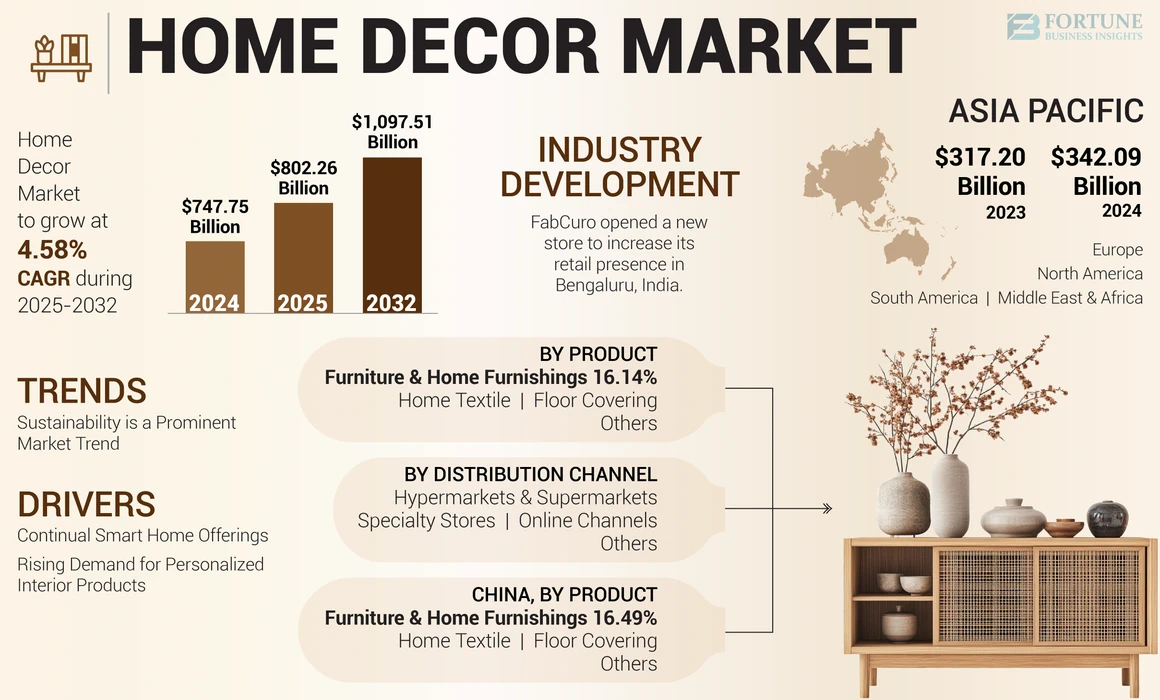
Corporate Apparel Industry Growth Projections: Size & Share Forecast 2025–2032
According to Fortune Business Insights, the global corporate apparel market size was valued at USD 288.82 billion in 2024 and is projected to grow from USD 305.56 billion in 2025 to USD 458.24 billion by 2032, registering a CAGR of 6.01% (2025–2032).
- Asia Pacific led the market in 2024 with a 94.8% market share, fueled by employment growth and government investments in MSMEs across India, China, and Vietnam.
- Asia Pacific witnessed corporate apparel market growth from USD 110.53 billion in 2023 to USD 116.59 billion in 2024.
- Formal shirts dominated in 2024 as the most widely adopted apparel type for corporate branding, while formal pants & trousers are expected to register the fastest CAGR due to increasing dual-purpose usage.
- Men’s segment accounted for the largest share in 2024, while women’s segment is forecast to grow fastest, driven by rising female workforce participation, especially in India and Southeast Asia.
- Hypermarkets/supermarkets remain the leading distribution channel, while e-commerce is set to grow at the highest pace, driven by digital adoption, smartphone penetration, and convenience.
Leading players include Aditya Birla Management Corporation Pvt. Ltd., Raymond Limited, VF Corporation, and PVH Corp.—all expanding their global presence with sustainable apparel collections and wider retail reach.

Request FREE Sample Copy of Corporate Apparel Market: https://www.fortunebusinessinsights.com/enquiry/request-sample-pdf/corporate-apparel-market-113426
Market Trends
- Ethical & Sustainable Fabrics Gain Traction
Workplaces are increasingly adopting eco-conscious apparel made from organic cotton, recycled polyester, vegan leather, and blended fabrics. Zero-waste manufacturing and circular fashion initiatives are also reshaping procurement policies for corporate uniforms.
- Personalization & Branding
Corporates are investing in branded uniforms with embroidered logos and custom designs to reinforce professional identity and boost team cohesion.
- 3D Printing in Apparel Manufacturing
The use of 3D printing technology for creating customized designs, on-demand logos, and sustainable apparel is reducing production waste and inventory risks, opening new revenue streams for suppliers.
Market Dynamics
Drivers
- Rising global workforce participation (India’s employment grew 36% between 2014–2024).
- Urbanization & industrial development in emerging economies.
- Corporate culture & branding needs across IT, retail, BFSI, and logistics sectors.
Restraints
- Shift toward casual workwear in tech, creative, and consulting industries.
- Hybrid work culture reducing day-to-day demand for formal corporate apparel.
Opportunities
- 3D printing & digital customization in production.
- Social media-driven visibility & influencer marketing.
- Sustainable formal wear demand in North America, Europe, and Asia Pacific.
Segmentation Analysis
By Type
- Formal Shirts – Largest share due to adoption as corporate uniforms with branding.
- Formal Pants & Trousers – Fastest growing, driven by fashion-conscious employees seeking dual-purpose wear.
- Others – Includes blazers, skirts, ties, and accessories.
By End-User
- Men – Dominated 2024 share, influenced by grooming and fashion awareness.
- Women – Expected highest CAGR; workforce participation in India rose from 22% (2018) to 40.3% (2024).
By Distribution Channel
- Hypermarkets & Supermarkets – Leading due to product availability and convenience.
- E-commerce/Online – Fastest growth, with Amazon, Flipkart, Noon, and eBay expanding reach.
- Convenience Stores & Others – Remain supplementary but important in local markets.
Get to know more about this market; Please visit: https://www.fortunebusinessinsights.com/corporate-apparel-market-113426
Regional Outlook
- Asia Pacific (USD 116.59 Billion in 2024): Largest market, led by India, China, and Vietnam. Rising MSME investments and urban workforce expansion drive demand.
- North America: Significant growth expected. U.S. payroll jobs rose by 228,000 in March 2025, boosting demand for formalwear.
- Europe: Strong focus on sustainable, designer corporate apparel across U.K., Germany, and France.
- South America & Middle East & Africa: Growth driven by e-commerce penetration, social media marketing, and eco-conscious consumer trends.
Competitive Landscape
The corporate apparel industry is moderately consolidated with global and regional players.
Key Players Include:
- Aditya Birla Management Corporation Pvt. Ltd. (India)
- Raymond Limited (India)
- PVH Corp. (U.S.)
- H&M Group (Sweden)
- Lefty Production Co. (U.S.)
- INDITEX (Spain)
- Giorgio Armani S.p.A. (Italy)
- Ralph Lauren Media LLC (U.S.)
- Casablanca Apparels (India)
- Cottonking (India)
Strategies:
- Geographic expansion into high-growth regions (Asia Pacific, Middle East).
- Sustainability initiatives (eco-friendly fabrics, ethical sourcing).
- E-commerce partnerships & D2C channels to target younger demographics.
- Product innovation via 3D printing, customizable designs, and luxury formal wear collections.
Key Industry Developments
- April 2025: Raymond Limited, an India-based textile and apparel manufacturing company, announced the opening of 900 new outlets in India. The launch will help the company expand its business across India.
- January 2024: Corneliani S.p.a., an Italy-based manufacturer, announced the launch of its formal and wedding line ‘Code’ in India. The formal wear line features a selection of suits, tuxedos, morning coats, and others.
- November 2022: Aditya Birla Fashion and Retail Ltd (ABFRL), a subsidiary firm of Aditya Birla Management Corporation Pvt. Ltd., partnered with Galeries Lafayette to open a luxury store in India. As per the company, they will open two flagship stores - one in Mumbai and another in New Delhi.
The corporate apparel market is projected to reach USD 458.24 billion by 2032, fueled by workforce expansion, branding needs, and demand for sustainable fashion. While casual dress codes pose challenges, opportunities in digital customization, eco-friendly apparel, and online retail will shape the industry’s future growth.
